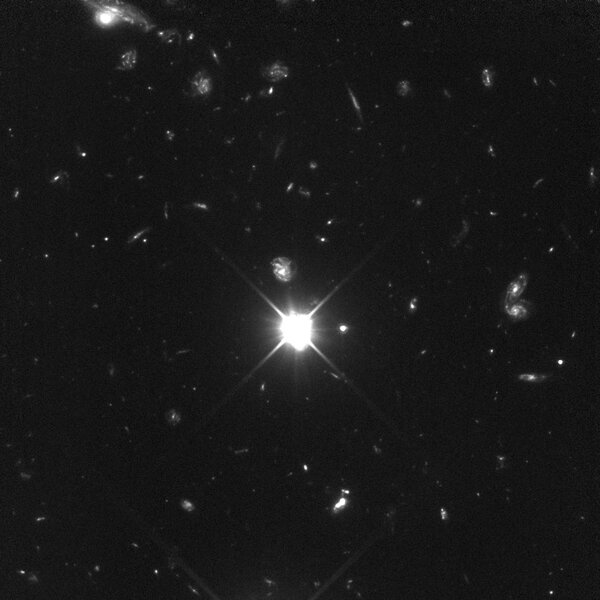Create a free profile to get unlimited access to exclusive videos, sweepstakes, and more!
BAFact Math: The Sun is mind-crushingly brighter than the faintest object ever seen. Seriously.

[BAFacts are short, tweetable astronomy/space facts that I post every day. On some occasions, they wind up needing a bit of a mathematical explanation. The math is pretty easy, and it adds a lot of coolness, which I'm passing on to you! You're welcome.]
Today's BAFact: How much brighter is the Sun than the faintest object ever seen? About Avogadro’s number times brighter.
Yesterday and the day before I wrote about how much brighter the Sun is than the Moon, and how much brighter the Sun is than the faintest star you can see (note that here I mean apparent brightness, that is, how bright it is in the sky, not how luminous it actually is). I have one more thing to add here.
Years ago, I worked on a Hubble Space Telescope camera called STIS - the Space Telescope Imaging Spectrograph. At the time, it was the most sensitive camera ever flown in space, and I was constantly amazed at what we saw using it.
Hubble did a series of observations called the Deep Fields: it stared at one spot in the sky for days, letting light from incredibly faint objects build up so that they could be detected. For the Deep Field South, STIS was used to observe a particular kind of galaxy, a quasar called J2233-606. The total observation time was over 150,000 seconds - nearly two days!
I worked on these images, and was chatting with a friend about them. We were astonished at the number of objects we could see, distant galaxies so faint that they were unnamed, uncategorized, because no one had ever seen them before. Playing with the numbers, we figured that the faintest objects we could see in the observations had a magnitude of about 31.5. That's incredibly faint.
How faint, exactly? The faintest star you can see with just your eye has a magnitude of about 6. Using the magnitude equation I wrote about earlier, plugging those numbers in we get
Brightness ratio = 2.512(31.5 - 6)) = 2.51225.5 = 16 billion
Wow.
But we can do better than that. A lot better. After all, the Sun is the brightest object in the sky, of course, with a magnitude of -26.7. Just for grins, how much brighter is the Sun than the faintest objects ever seen?
Brightness ratio = 2.512(31.5 - (-26.7)) = 2.51258.2 = 2 x 1023
Um.
That's 200,000,000,000,000,000,000,000. 200 sextillion. Holy yikes.
That number is crushing my mind. It's ridiculous. A sextillion is simply too big a number to grasp. And 200 of them? C'mon!
But hey, wait a sec...
Does the number 2 x 1023 look familiar to you? It does to me: it's the same order of magnitude (factor of 10) as Avogadro's number! It's the number of atoms of an element in a mole of the element, where a mole is the number of atoms in 12 grams of pure carbon-12. I know, it's an odd unit, but it's handy in chemistry, and a lot of (geeky) folks have heard of it.
Avogadro's number is actually about 6 x 1023. So if we could detect stars or galaxies just a hair more than a magnitude fainter, the ratio of the brightness of the Sun to those objects would be Avogadro's number. Huh.
I'm not sure that helps, but it's fun in a spectacularly nerdtastic kind of way.
Science, baby. I love this stuff!




























